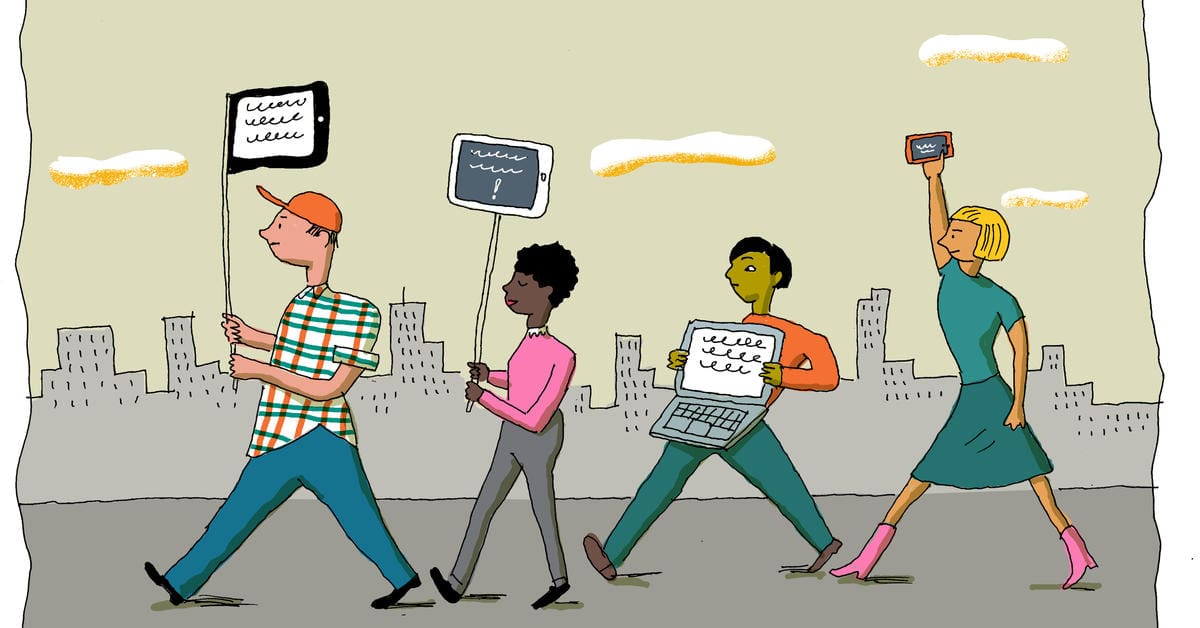2020 brought unexpected changes in the global trajectory. The pandemic was fresh and unfamiliar; life was limited to the confines of the home and discussion of the state of the world shifted online. Social media sites became the primary fora for accessing and sharing news, and thus a crucial tool for activism campaigns.
In the wake of George Floyd’s murder, Instagram was flooded with infographics to raise awareness about police brutality and racial injustice. The infographic, a currency of the online attention economy, was popularised like never before, propagated in the midst of lockdown-induced social media hyperfocus. Activists were now obliged to educate, fundraise, coordinate mutual aid and compete for exposure and support, all in a few easily-digestible and shareable slides.
Instagram (along with TikTok and Twitter) consequently became one of the primary intellectual and communicative spaces for contemporary discourse, as an avenue for many to become aware of and participate in social change.
Fundamentally, the app is designed to keep users mindlessly scrolling and refreshing for endless streams of content. In this game of captivation, the lifespan of a post is short. Typically an Instagram post has met its peak engagement within 48 hours.
On a platform that is so fast and fleeting, what makes infographics on Instagram so compelling is the condensation of information into aesthetically-appealing visuals. In a maximum of ten slides, infographics grab the attention of users who mindlessly scroll through the app and make often drab or dismal topics easy to digest and share, sparking interest among the otherwise socially and politically disengaged.
Infographics created by @feminist, @the_female_lead and @feminismatw make use of graphic illustrations of women of different body types, skin colours, hairstyles and fashion sense. They are key visual elements that, at a glance, express their stance of empowerment and develop a connection with Instagram users who these illustrations represent. Similarly, succinct but impactful phrases such as ‘We can smash the patriarchy’ or ‘I won’t apologise for evolving past your comfort zone’ are commonly used to provoke distinct emotional responses, striking viewers immediately upon interacting with the post.
In a mere ten slides, however, there is limited room for the complexities of issues to be delineated. Though arguably many forms of public activism may involve a degree of simplification or reduction, the intentional design of Instagram and the short lifespan of posts are uniquely reductive qualities. Without room for nuanced portrayals of complex issues, Instagram users are at risk of developing unbalanced or oversimplified understandings. Often, accounts adhere to a singular, narrow ideology that fails to provide a thorough explanation or critically engage with competing perspectives.
At the end of infographics is typically a call to action to like and share the post, or to change one’s profile picture or bio to demonstrate support. This draws Instagram into the transactional consumption of information and commodifies activism as a source of online clout and attention. Not only does this drive users towards performative, virtue-signalling acts such as liking, commenting and reposting, but it also affects broader social inertia towards these issues; online interaction becomes a stand-in for activism and fostering real social change.
On the other hand, we cannot rule out the utility of infographics in rendering social and political issues more accessible than ever. In an age where many own a smartphone and can access the internet, a wealth of information is readily available. This is the case for Gen Z, 59% of whom get their news from social media and 65% of whom check Instagram on a daily basis. Now, anyone with an account can easily view and publish content to express a particular idea. Considering this, the reductive qualities of Instagram infographics do not simply deem them entirely problematic. Perhaps this is the price tag for the greater good of accessibility.
Social media is now an irreplaceable aspect of our lives. So long as Instagram operates as a space for social and political discussion, infographics will circulate. Users must remain wary of our consumption of them.





